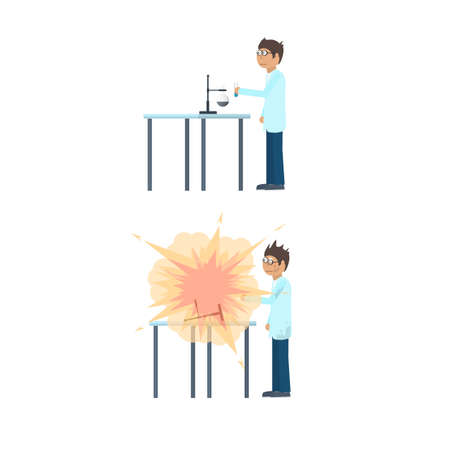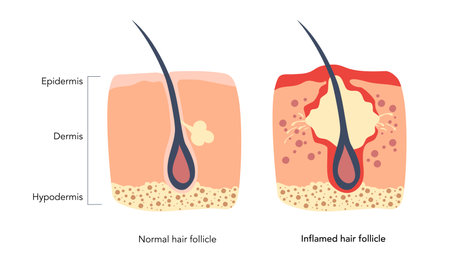Overview of Rotator Cuff Injuries
The rotator cuff is a group of four muscles and their tendons that surround the shoulder joint. These muscles—supraspinatus, infraspinatus, teres minor, and subscapularis—work together to keep your shoulder stable and help you lift and rotate your arm. Because we use our shoulders for so many everyday movements, it’s no surprise that injuries to the rotator cuff are pretty common.
What Causes Rotator Cuff Injuries?
Rotator cuff injuries can happen suddenly or develop over time. Here are some of the most common reasons people in the U.S. experience these injuries:
- Overuse: Repeating the same shoulder motion again and again (like throwing a baseball or painting a ceiling) can wear down the rotator cuff tendons.
- Aging: As we get older, our tendons naturally weaken and are more likely to tear—even from simple activities.
- Acute Injury: A fall or lifting something too heavy can cause a sudden tear.
Who Gets Rotator Cuff Injuries?
These injuries don’t just affect athletes. While baseball players, tennis players, and swimmers often come to mind first, older adults make up a large portion of those with rotator cuff tears. In fact, research shows that about 2 million Americans visit their doctor each year because of a rotator cuff problem. For people over 60, nearly half may have some degree of rotator cuff tear—even if they don’t always feel pain.
Prevalence Among Different Groups
| Group | How Common? |
|---|---|
| Athletes (especially overhead sports) | High risk due to repetitive use |
| Adults over 60 | Up to 50% may have a tear |
| General adult population (all ages) | About 20% report shoulder pain yearly |
Why Does This Matter?
If you’re experiencing shoulder pain or weakness, understanding how the rotator cuff works—and why it gets injured—can help you make informed decisions about treatment. Whether you’re an athlete trying to get back on the field or someone who wants to stay active as you age, knowing your options is key. In the next sections, we’ll dive into how non-surgical and surgical treatments compare when it comes to repairing the rotator cuff.
2. Non-Surgical Interventions
Understanding Conservative Treatment Options
When it comes to rotator cuff injuries, not every case needs surgery right away. In fact, most people in the U.S. start with non-surgical, or conservative, treatments to see if their shoulder pain and function can improve without an operation. Let’s take a look at some of the most common options doctors recommend.
Physical Therapy
Physical therapy is often the first step for treating rotator cuff issues. A physical therapist will design a program that focuses on gentle stretching and strengthening exercises. These exercises help restore range of motion, improve muscle balance, and reduce pain. You’ll usually visit a clinic two or three times a week, but home exercises are a big part of the process too. Many patients notice improvement within 6 to 12 weeks if they stick with their program.
Activity Modification
Changing how you use your shoulder is another important strategy. This might mean taking a break from sports, heavy lifting, or overhead movements that make your symptoms worse. Sometimes, small changes—like using your other arm for certain tasks—can make a big difference while your shoulder heals.
Anti-Inflammatory Medications
Over-the-counter medications like ibuprofen (Advil, Motrin) or naproxen (Aleve) are often suggested to help manage pain and swelling. These drugs can be very effective in the short term, but long-term use should be discussed with your healthcare provider to avoid side effects.
Corticosteroid Injections
If pain is severe and not improving with other methods, your doctor might recommend a corticosteroid injection directly into your shoulder. This can provide quick relief by reducing inflammation around the rotator cuff. However, injections are generally used sparingly because repeated shots can weaken tendons over time.
What to Expect: Recovery and Outcomes
The goal of non-surgical treatment is to reduce pain and get you back to daily activities without surgery. Most people experience significant improvement in shoulder function and comfort through these methods alone. However, recovery does take time and commitment—especially when it comes to doing physical therapy exercises regularly at home.
Comparison Table: Non-Surgical Intervention Options
| Treatment | Main Purpose | Typical Duration | Expected Benefits | Possible Limitations |
|---|---|---|---|---|
| Physical Therapy | Restore strength & flexibility | 6-12 weeks or longer | Improved movement & less pain | Requires consistency & effort |
| Activity Modification | Avoid further injury | Ongoing as needed | Pain reduction during healing | May limit some activities temporarily |
| Anti-Inflammatory Meds | Pain & swelling control | Short-term use recommended | Eases discomfort quickly | Risk of side effects if used long-term |
| Corticosteroid Injection | Reduce inflammation fast | Usually one-time or limited use | Rapid relief of severe pain | Tendon weakening with repeated use |
If non-surgical treatments do not bring enough relief or if you have significant weakness or tears that don’t heal, your doctor may discuss surgical options next. But for many people, these conservative measures are enough to get them back to work, sports, and enjoying life again.

3. Surgical Intervention Approaches
Overview of Rotator Cuff Surgical Techniques
Surgical repair for rotator cuff injuries is considered when non-surgical treatments like physical therapy and medication don’t provide enough relief or if the tear is severe. In the United States, two main surgical approaches are commonly used: arthroscopic surgery and traditional open surgery. Each method has its own set of benefits, indications, and recovery times.
Types of Rotator Cuff Surgery
| Surgical Technique | Description | Common Indications | Recovery Time |
|---|---|---|---|
| Arthroscopic Repair | Minimally invasive procedure using a small camera and instruments through tiny incisions. | Small-to-medium tears, less tissue damage, active individuals seeking faster recovery. | 4-6 months for full recovery; often less pain post-op. |
| Open Repair | Larger incision over the shoulder to allow direct access to the torn tendon. | Large or complex tears, previous unsuccessful repairs, significant muscle involvement. | 6-12 months for complete healing; more extensive rehab needed. |
| Mini-Open Repair | Combines arthroscopy with a smaller open incision for better visualization and repair. | Tears that are difficult to access with arthroscopy alone but do not require full open surgery. | Similar to arthroscopic recovery time; moderate pain and rehab needs. |
When Is Surgery Recommended?
Surgery may be recommended in the following situations:
- The rotator cuff tear is large or involves multiple tendons.
- The patient is young or physically active and wants to return to sports or demanding work.
- The injury does not improve after several months of non-surgical treatments.
- The shoulder loses significant strength or function due to the tear.
- There is acute trauma causing sudden loss of movement or severe pain.
Advancements in U.S. Surgical Practices
The field of rotator cuff surgery in the U.S. has advanced rapidly over the last decade. Surgeons now use high-definition cameras and specialized tools for more precise repairs with minimal tissue disruption. The development of stronger suture materials and biologic augmentation (using patches or growth factors) helps improve healing rates, especially in larger tears. Patients also benefit from enhanced anesthesia techniques and improved rehabilitation protocols, making recovery smoother and quicker than ever before.
4. Comparing Outcomes and Recovery
Recovery Timelines: How Long Does It Take?
When it comes to rotator cuff injuries, people often want to know how long they’ll be out of work, away from sports, or limited in daily life. Here’s a quick comparison:
| Treatment Type | Typical Recovery Time | Return to Work | Return to Sports |
|---|---|---|---|
| Non-Surgical (Physical Therapy, Rest, Injections) | 3-6 months | Light duty possible within weeks; full duty in 2-3 months | 3-6 months (depends on sport and severity) |
| Surgical Repair | 6-12 months | Desk work: 1-2 months Manual labor: 4-6+ months |
6-12 months (gradual return based on healing) |
Success Rates and Risks
What Are the Chances of Getting Better?
Non-surgical treatments can help most people with mild to moderate tears manage pain and regain function, especially if they’re not highly active or involved in heavy labor. Studies show about 70-80% of patients improve without surgery. However, some may experience ongoing weakness or pain.
Surgical repair, on the other hand, is often recommended for larger tears or when non-surgical options haven’t worked. Surgery has a higher chance of restoring full strength—about 85-90% success for returning to normal activities—but carries risks like infection, stiffness, or re-tear.
| Treatment Type | Success Rate (Improved Function) | Main Risks |
|---|---|---|
| Non-Surgical | 70-80% | Pain flare-ups, incomplete recovery, possible tear progression |
| Surgical Repair | 85-90% | Surgical risks (infection, stiffness), longer downtime, re-tear risk especially in older adults or smokers |
Rehabilitation Differences: What to Expect Day-to-Day?
Non-Surgical Rehab:
- Physical therapy focus: Strengthening shoulder muscles, improving flexibility.
- Pain management: Ice, anti-inflammatory meds, activity modifications.
- No surgical wound care needed.
- You may keep doing daily tasks with some changes.
Surgical Rehab:
- Sling use: Usually worn for 4-6 weeks after surgery to protect the repair.
- Physical therapy stages:
Early (gentle motion only), then gradual strengthening over several months. - Lifting and overhead activities restricted for several months.
- You may need help with dressing, bathing, and chores at first.
The Bottom Line for Daily Life and Activities
If your job is mostly desk work or you’re not super active, non-surgical treatment could get you back on your feet faster with fewer risks. But if you have a physically demanding job or want to play sports at a high level again, surgery might offer a better shot at full recovery—even though it takes longer and requires more commitment during rehab. Your age, overall health, and lifestyle goals all play a big part in this decision. Talking openly with your healthcare provider will help you choose what’s best for you.
5. Factors Influencing Treatment Decisions
Understanding What Impacts Your Choice
When it comes to deciding between non-surgical and surgical interventions for rotator cuff repair, several important factors come into play. Both patients and healthcare providers in the U.S. consider a range of personal, medical, and practical details before choosing the best path forward. Let’s break down some of the main things that shape these decisions.
Lifestyle Considerations
Your daily activities and hobbies matter. If you’re an athlete or have a physically demanding job, you might need a solution that gets you back to full strength faster—even if that means surgery. On the other hand, if your lifestyle is more sedentary, non-surgical options like physical therapy might be just right.
How Lifestyle Affects Treatment Choices
| Lifestyle Type | Preferred Approach | Reasoning |
|---|---|---|
| Active (sports, manual labor) | Surgical or aggressive rehab | Faster recovery for high-demand use |
| Sedentary (desk work, retired) | Non-surgical (physical therapy) | Avoids risks of surgery; meets lower activity needs |
Age Matters Too
Age plays a big role in treatment planning. Younger patients tend to recover better from surgery and may benefit more in the long run. Older adults may prefer less invasive options due to slower healing or other health issues.
Treatment by Age Group
| Age Group | Common Recommendation |
|---|---|
| Younger (<50 years) | Surgical repair often considered for active lifestyles and better healing capacity |
| Older (65+ years) | Non-surgical management preferred unless function is severely limited |
Severity of Injury
The extent of your rotator cuff tear is one of the biggest factors. Small, partial tears might respond well to physical therapy and rest. Large or complete tears—or those causing significant pain and weakness—often lead providers to recommend surgery.
Insurance Coverage in the U.S.
Let’s be honest: insurance can make a difference. Some insurance plans may cover more physical therapy sessions than others, while others may have specific requirements before approving surgery. It’s common for providers to help patients navigate these details so they can get the care they need without unexpected costs.
Insurance Influence Table
| Treatment Option | Insurance Considerations in the U.S. |
|---|---|
| Physical Therapy (Non-Surgical) | Often covered but may have session limits; prior authorization sometimes needed |
| Surgery (Surgical Repair) | Larger out-of-pocket cost; usually requires documentation of failed non-surgical treatment first |
Your Personal Goals and Preferences
No two patients are exactly alike. Some people want to avoid surgery at all costs; others just want the quickest route back to their normal life. Healthcare providers in the U.S. routinely discuss your goals, fears, and expectations as part of building a treatment plan that fits you personally.


